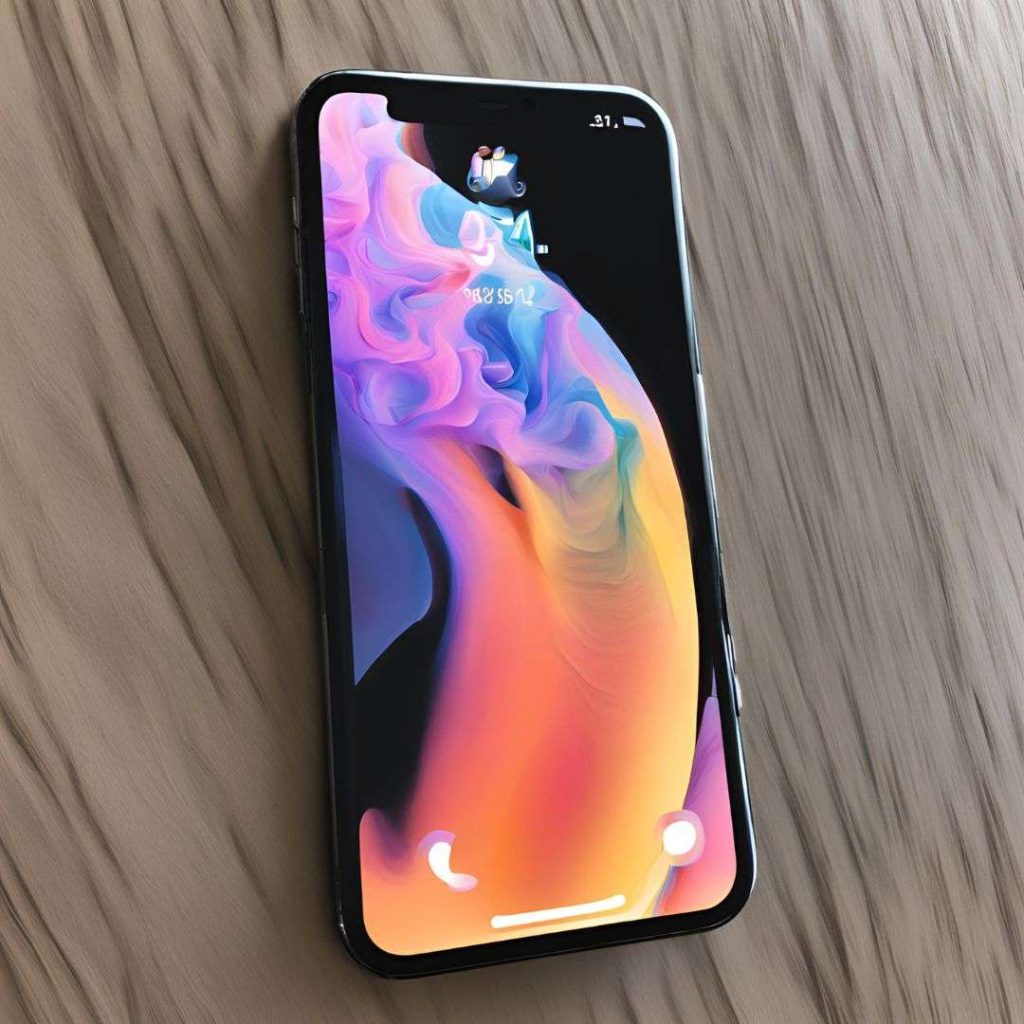The iPhone is a versatile device that offers more than what meets the eye. Beyond the intuitive interface and seamless integration with other Apple products lies a layer of hidden functionalities accessible through iPhone secret codes.
These iPhone secret codes can unlock diagnostic tools, provide detailed information about your device, and enable advanced features that most users are unaware of. In this article, we’ll delve into the world of iPhone secret codes, revealing their purposes and how to use them.
These iPhone USSD codes, when entered into your phone’s dialer, can help you access information, perform tests, and manage settings that aren’t available through the standard menu.
What Are iPhone Secret Codes?
iPhone secret codes, also known as USSD (Unstructured Supplementary Service Data) codes or MMI (Man-Machine Interface) codes, are short commands entered through the phone’s dialer.
These iPhone secret codes are not exclusive to iPhones; they are used across various phone brands and models to access specific functions that aren’t usually available through the device’s main interface. While some codes work universally on all iPhones, others may vary depending on the carrier or the iOS version.
These iPhone USSD codes are used for a variety of reasons, such as accessing hidden menus, testing the phone’s functionality, or obtaining specific information about the device or network.
In this guide, we’ll explore some of the most useful iPhone secret codes and explain what each one does.
These iPhone secret codes can provide insights into your device’s functionality and offer shortcuts to settings and features that might otherwise be buried in your iPhone’s menus.
1. Check Your iPhone’s IMEI Number
Code: *#06#
One of the simplest and most widely known secret codes is *#06#. By entering this code in your phone’s dialer, you can instantly display your iPhone’s IMEI (International Mobile Equipment Identity) number. The IMEI number is a unique identifier for your device and can be essential for security, especially if your phone is lost or stolen.
2. Field Test Mode
Code: *3001#12345#*
Field Test Mode is a powerful diagnostic tool that provides detailed information about your phone’s signal strength and cellular connection. Entering *3001#12345#* in the dialer and pressing the call button will bring up a hidden menu that includes various technical metrics. The most popular use of Field Test Mode is to check the exact signal strength in decibels (dBm).
3. Call Waiting Status
Code: *#43#
If you want to check whether call waiting is enabled on your iPhone, simply dial *#43#. Call waiting allows you to receive incoming calls even when you’re already on the line. If call waiting is enabled, you’ll be notified of an incoming call with an audible tone and have the option to switch between the calls. This code will display the status of call waiting on your device.
To enable call waiting, you can dial *43#, and to disable it, you dial #43#. This is useful for those who need to manage multiple calls and don’t want to miss important conversations.
4. Hide Your Caller ID
Code: *#31#
Sometimes, you may want to make a call without revealing your phone number. By dialing *#31#, you can check if caller ID is currently hidden on your iPhone. If you want to make a call without displaying your number, dial #31# followed by the phone number you want to call. This temporarily hides your caller ID for that specific call, adding a layer of privacy.
5. Check Call Forwarding Status
Code: *#21#
If you have call forwarding enabled and want to check the status, dial *#21# on your iPhone. This code will display whether your calls are being forwarded to another number. Call forwarding is useful if you want calls directed to another device or number while you’re unavailable or using a different phone. To activate or deactivate call forwarding, you would typically need to go through your phone’s settings or use carrier-specific codes, but this code provides a quick status check.
6. Enable or Disable Call Forwarding
Code to Enable: *21*[phone number]#
Code to Disable: #21#
You can also use iPhone secret codes to directly enable or disable call forwarding without diving into the settings menu. Dial *21* followed by the phone number you want your calls forwarded to, and end with #. To deactivate call forwarding, simply dial #21#. This quick method is particularly handy for business users who may need to forward calls to a different line frequently.
7. View Your SMS Message Center Number
Code: *#5005*7672#
Every mobile phone has an SMS Message Center number, which is responsible for delivering your text messages. If you’re having trouble sending or receiving texts, it might be worth checking your SMS Message Center number to ensure it’s correctly set. Entering *#5005*7672# into your iPhone will display this number, which can be useful for troubleshooting text message issues with your carrier.
8. Enable EFR Mode (Enhanced Full Rate)
Code: *3370#
EFR, or Enhanced Full Rate, is a voice codec used in GSM networks to improve call quality. By entering *3370#, you can enable EFR mode on your iPhone, potentially enhancing the clarity of your voice calls. However, enabling this mode may slightly reduce your battery life as it uses more power to improve call quality. If you want to turn it off, you can dial #3370#.
9. Call Barring Status
Code: *#33#
Call barring is a feature that allows you to block specific types of outgoing or incoming calls on your iPhone. If you want to check whether call barring is active, dial *#33#. This will display the status of call barring, showing which types of calls (if any) are currently blocked. This feature is often used to prevent accidental calls or to control costs while roaming internationally.
10. Check Data Usage Info
Code: *3282#
For users who are conscious of their mobile data usage, the code *3282# can be particularly useful. By entering this code, your iPhone will display your current data usage, helping you keep track of your internet consumption and avoid exceeding your data cap. Note that this feature’s availability might depend on your carrier, and not all networks support this code.
11. View Local Traffic Information
Code: *#76#
While not available in all regions or on all carriers, the code *#76# allows users to access information about their local network traffic. This can provide insights into network congestion and signal issues, which can be useful for troubleshooting connectivity problems.
12. Check Number Identification
Code: *#67#
This code shows the number set for call forwarding when your line is busy or if you reject a call. By dialing *#67#, you can see where calls will be directed if you’re unable to answer, helping you manage your call forwarding settings more effectively.
13 . Check Call Forwarding When Out of Reach
Code: *#62#
Purpose: Displays the number to which calls are forwarded when your iPhone is out of reach or turned off. This can help ensure calls are redirected properly when you are unavailable.
14 . Deactivate Conditional Call Forwarding When Unreachable
Code: ##62#
Purpose: Disables call forwarding when your phone is out of reach. Useful for reverting to receiving calls directly on your device.
15. Activate Conditional Call Forwarding When Unreachable
Code: **62*Number#
Purpose: Forwards calls to a specified number when your phone is out of reach. Replace “Number” with the phone number you want to forward calls to.
16 . Check Call Waiting Status for a Specific Line
Code: *#43*Line#
Purpose: Displays call waiting status for a specific line if your device supports multiple lines. Replace “Line” with the line number you want to check.
17 . Activate Call Barring for Outgoing International Calls Except to Home Country
Code: *331*PIN*#
Purpose: Blocks all outgoing international calls except those to your home country. This is useful for controlling call costs while traveling.
18 . Deactivate Call Barring for Outgoing International Calls Except to Home Country
Code: #331*PIN#
Purpose: Lifts the restriction on outgoing international calls, allowing calls to any country.
19 . Check Last Call Duration
Code: *#*#147#*#*
Purpose: Provides the duration of the last call made or received on your iPhone. This can be helpful for monitoring talk time.
20. Request Balance Details (Carrier Dependent)
Code: *#123#
Purpose: Retrieves balance details from your carrier. This code’s functionality depends on your carrier’s support for iPhone USSD codes.
21 . Activate SMS Message Center
Code: **5005*7672*number#
Purpose: Sets the SMS message center number for text messaging. Replace “number” with the appropriate service center number provided by your carrier.
22 . Deactivate SMS Message Center
Code: ##5005*7672#
Purpose: Clears the SMS message center number, which could be useful for troubleshooting messaging issues.
23 . Get Local Traffic Information
Code: *#76#
Purpose: Shows local network traffic information. Useful for understanding network congestion in your area.
24 . View Call Redirect Status
Code: *#67#
Purpose: Shows whether calls are being redirected, and if so, where they’re being redirected. This is useful for ensuring call forwarding settings are correct.
25 . Check Caller ID Settings
Code: *#31#
Purpose: Displays the current status of your caller ID settings, whether it’s hidden or shown by default.
26 . Check SIM Card Serial Number (ICCID)
Code: *# ICCID#
Purpose: Displays the ICCID (Integrated Circuit Card Identifier) of your SIM card, which can be necessary for certain network or carrier support issues.
27 . Check Service Menu
Code: *#*#7378423#*#*
Purpose: Opens a hidden service menu for advanced diagnostics and settings. This is more commonly available on non-iPhone devices but can occasionally work on certain iPhone models.
28 . Check GPRS Information
Code: *#4777*8665#
Purpose: Displays GPRS (General Packet Radio Service) information for your iPhone, including data transfer details and signal strength.
29 . Enable Netmonitor
Code: *3001#12345#*
Purpose: Opens the Netmonitor feature for tracking and analyzing network activity. This is particularly useful for developers and network technicians.
30 . Reset All Network Settings
Code: ##873283#
Purpose: Resets your iPhone’s network settings, including Wi-Fi passwords, VPN configurations, and carrier settings.
31 . Enable Caller ID for a Single Call
Code: *31#Number
Purpose: Temporarily enables caller ID for a single call if it is normally hidden. Replace “Number” with the phone number you are calling.
32 . Check Your Billing Cycle (Carrier Dependent)
Code: *646#
Purpose: Retrieves your billing cycle details from your carrier. This code is carrier-dependent and may not be available on all networks.
33 . Access Voicemail Settings
Code: *#5005*86#
Purpose: Displays the voicemail number configured on your iPhone. Useful for verifying or troubleshooting voicemail issues.
34 . Update Carrier Services
Code: *#0011#
Purpose: Forces your iPhone to check for updates to carrier services. This can help resolve network or connectivity issues.
35 . Enable or Disable Anonymous Call Rejection
Enable Code: *77
Disable Code: #77
Purpose: Enables or disables anonymous call rejection, preventing calls from people who block their caller ID.
36 . Check Voicemail Status
Code: *#61#
Purpose: Displays the status of your voicemail settings, including whether it is active and the number of voicemail messages.
37 . Check SIM Lock Status
Code: *#7465625#
Purpose: Displays the status of the SIM lock on your iPhone. This is useful if you are unsure whether your device is locked to a specific carrier.
38 . Activate Do Not Disturb for a Specific Time
Code: *35#
Purpose: Activates Do Not Disturb mode for a set period. Useful for managing interruptions without manually enabling the mode in settings.
39 . Check Your Data Usage (Carrier Dependent)
Code: *3282*#
Purpose: Retrieves data usage information from your carrier. This can help monitor your data consumption if you have a limited data plan.
40 . Display SIM Toolkit
Code: *#0#
Purpose: Opens the SIM Toolkit menu, which provides access to network services offered by your carrier.
41 . Check Call Duration (Carrier Dependent)
Code: *#3282#
Purpose: Provides call duration details from your carrier. This code is carrier-dependent and may not be available on all networks.
42 . Access Hidden Menu for Testing Hardware
Code: *#*#3424#*#*
Purpose: Opens a hidden menu for testing hardware components like speakers, microphones, and cameras. This is generally more common on Android devices but can work on some iPhones.
43 . Activate TTY (Teletypewriter) Mode
Code: *#455#
Purpose: Enables TTY mode for use with teletypewriter devices. Useful for accessibility and communication for those who are deaf or hard of hearing.
44 . Deactivate TTY (Teletypewriter) Mode
Code: #455#
Purpose: Disables TTY mode, returning your iPhone to normal operation without TTY support.
45 . Check Data Call Settings
Code: *#33#
Purpose: Displays the status of data call settings, showing whether data calls are enabled or barred.
46 . View Data Transfer Settings
Code: *#3282#
Purpose: Provides details about your current data transfer settings and usage. Useful for managing data consumption and configuring data settings.
47 . Enable National Call Barring
Code: *34#
Purpose: Blocks all outgoing calls to numbers outside your home network. Useful for preventing unauthorized calls or managing international calling costs.
48 . Deactivate National Call Barring
Code: #34#
Purpose: Lifts the restriction on national calls, allowing calls to numbers outside your home network.
49 . Enable Fax Mode
Code: *99#
Purpose: Enables fax mode on your iPhone, allowing it to be used for faxing if supported by your carrier. This is more commonly used in business settings.
50 . Check Handset Authentication Code
Code: *#1001#
Purpose: Displays the handset authentication code, which can be used for certain types of network authentication.
51 . Enable AMR Mode (Adaptive Multi-Rate)
Code: *3370#
Purpose: Turns on AMR mode for better call quality. This iPhone secret codec dynamically adjusts the audio rate for voice calls to optimize call clarity.
52 . Deactivate AMR Mode (Adaptive Multi-Rate)
Code: #3370#
Purpose: Disables AMR mode, which may improve battery life at the expense of call quality.
53 . Check Enhanced Full Rate (EFR) Settings
Code: *#337#
Purpose: Shows whether EFR (Enhanced Full Rate) is enabled or disabled, which impacts call quality and battery usage.
54 . Activate Half-Rate Codec
Code: *4720#
Purpose: Enables the Half-Rate Codec, which reduces voice call quality to save battery life. Useful when conserving battery is a priority.
55 . Deactivate Half-Rate Codec
Code: #4720#
Purpose: Disables the Half-Rate Codec, restoring higher call quality at the expense of increased battery consumption.
56 . Check Your IMEI (International Mobile Equipment Identity)
Code: *#06#
Purpose: Displays the IMEI number of your iPhone, which is useful for tracking or identifying your device, especially in cases of loss or theft.
57 . Activate High-Speed Data Service
Code: *#301#
Purpose: Enables high-speed data services if supported by your carrier and data plan. This can improve data speeds and overall internet experience.
58 . Deactivate High-Speed Data Service
Code: #301#
Purpose: Disables high-speed data services, which may help conserve data usage or improve network stability.
59 . Check Firmware Version
Code: *#1234#
Purpose: Displays the firmware version of your iPhone. This can be helpful when troubleshooting software issues or verifying software updates.
60 . Check LCD Display Test
Code: *#0*#
Purpose: Opens a test screen to check for dead pixels or display issues on your iPhone. This is typically more common on Android devices but can work on some iPhone models.
61 . Check Battery Information
Code: *#0228#
Purpose: Provides detailed battery information, including current charge level and battery health. Useful for diagnosing battery issues or checking battery life.
62 . Check Your Field Test Mode
Code: *3001#12345#*
Purpose: Opens the Field Test Mode on your iPhone, providing detailed information about the current cellular network and signal strength. This is useful for testing network performance and identifying weak signal areas.
Conclusion
These 50 iPhone secret codes provide even more functionality, allowing you to diagnose issues, configure settings, and access hidden features on your iPhone.
While many of these iPhone USSD codes offer useful shortcuts, remember that their availability and functionality can depend on your carrier and region.
Some codes may not work on all devices, or they may be limited to specific models and software versions. Always use these iPhone secret codes responsibly, as they can alter settings that affect your device’s operation.








